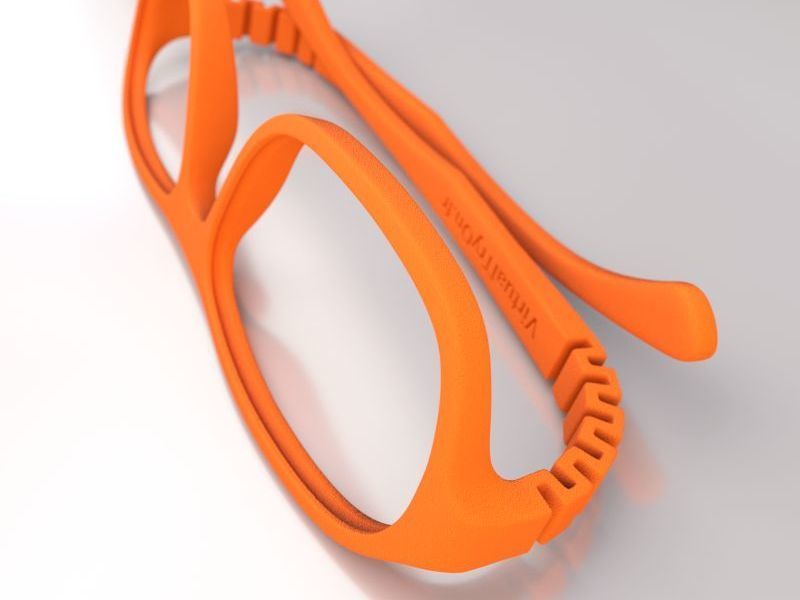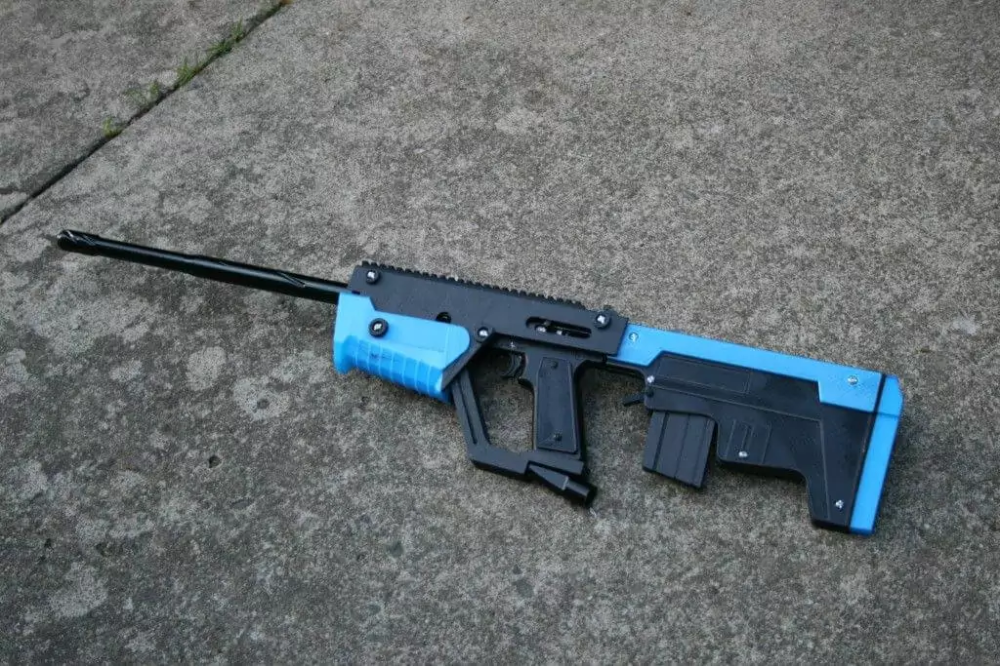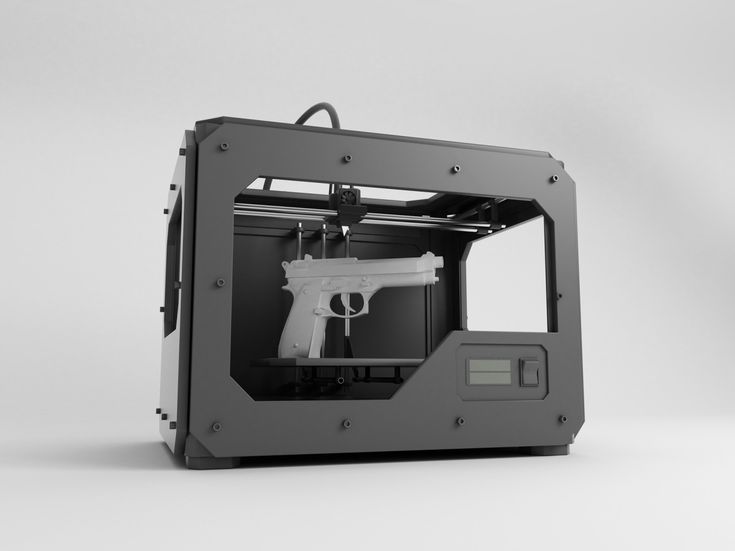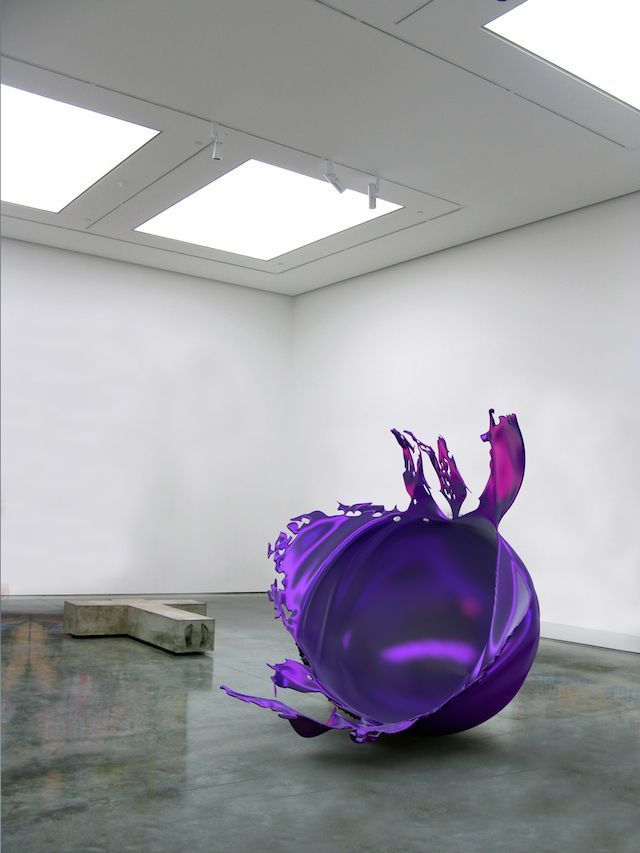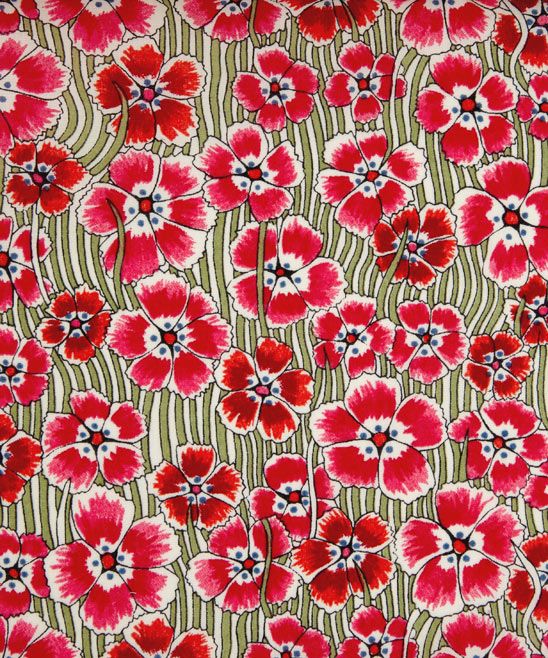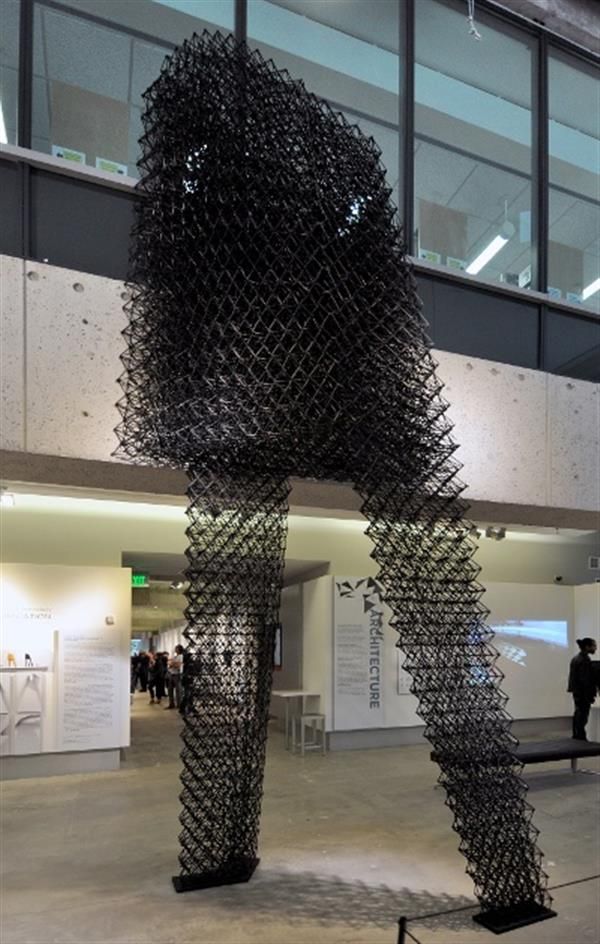Glass fiber 3d printing
Glass vs. carbon fiber 3D printing composites
David Durbin16 October 2019
Applications
Both glass and carbon fiber composites extend the versatility of fused filament fabrication (FFF) 3D printing by enhancing a part's mechanical properties.
For example, by using glass or carbon fiber composite materials on a compatible 3D printer (like the Ultimaker S5 Pro Bundle or Ultimaker S3), you can quickly and affordably produce high-strength parts that:
Validate geometries
Optimize designs
Reduce weight
Consolidate assemblies
Test prototypes that will be injection molded
Replace metal components
But which composite 3D printing materials should you choose in the first place?
Choosing the right fiberglass or carbon fiber composite is key to the success of your 3D printing application
After all, both glass and carbon fiber filaments can end up having similar mechanical properties in a 3D printed part.
This is especially true when leading materials companies (like those whose print settings profiles are downloadable via the Ultimaker Cura Marketplace) can boost various properties by tweaking:
Base polymer choice (e.g. ABS, nylon, polycarbonate)
Base polymer mix (e.g. ABS + polycarbonate)
Fiber length (e.g. long or chopped, short or milled)
Fiber fill percentage (e.g. 20% glass fiber)
And many more variables...
So why would you choose one fiber over the other?
Glass vs. carbon fiber composites – which is the winner?
Roger Sijlbing, Head of Sales at BASF 3D Print Solutions Additive Extrusion Systems, told us:
There are a lot of considerations to determine which material fits the application. Even within for example automotive, both [glass and carbon fiber composite] materials could fit. It depends on the requirements of the application and the total cost of ownership.
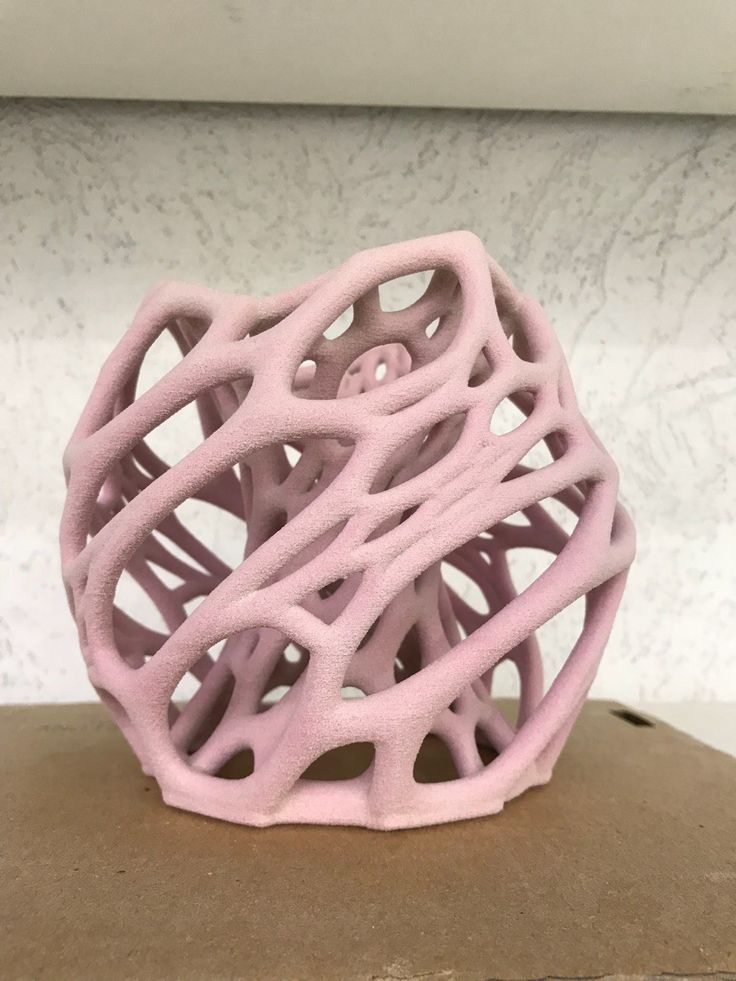
So, to guide your material choice based on the requirements of your 3D printing applications here's an at-a-glance list to show which composite (generally) wins for different 3D printing requirements:
| Requirement | Winner? |
|---|---|
| More affordable | Glass fiber |
| Tensile strength | Carbon fiber |
| Stiffness | Carbon fiber |
| Durability | Glass fiber |
| Flexibility | Glass fiber |
| Low weight | Carbon fiber |
| Heat resistant | Both |
| Chemical resistant | Both |
| Fatigue resistant | Carbon fiber |
| UV-light resistant | Both |
| ESD safe potential | Carbon fiber |
| Electrical conductivity potential | Carbon fiber |
| Allows radio wave passthrough | Glass fiber |
| Multiple colors available | Glass fiber |
That might be useful if any of those properties are a priority for your application.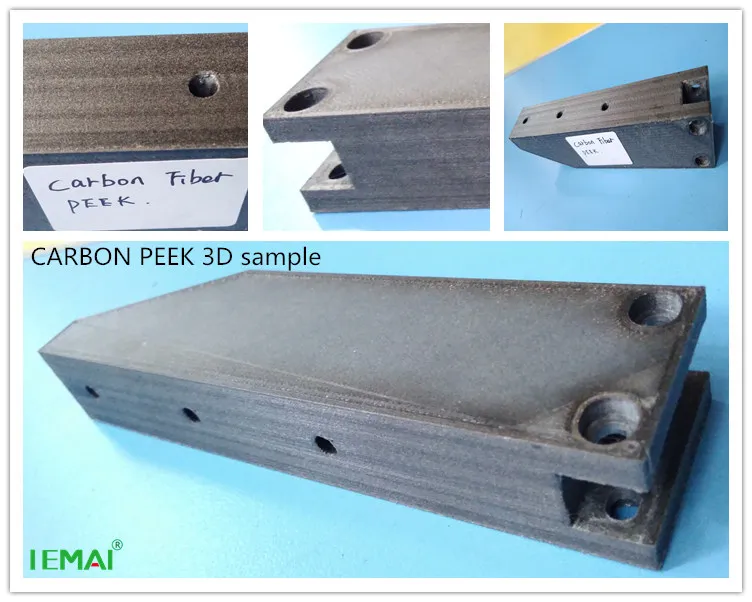
But what if there’s still no clear choice between glass and carbon fiber for your 3D printing needs? Then, there are a few more considerations to inform your choice.
To understand these, let’s dig deeper into the manufacturing processes involved...
How glass and carbon fibers are made
Glass fiber
Glass fibers began to be commercially produced in 1936. In fact, the material's invention led to the partnership known today as Owens Corning.
Glass fibers are made by melting silica to remove impurities. The liquid glass is then extruded through a heated metal plate with small holes – called a bushing. While the glass strings are cooled from around 1,200 °C with water and air, they are stretched into thin fibers as they are pulled onto a winder.
Owens Corning created two glass fiber composite filaments, XSTRAND®. Their predefined print settings are downloadable via Ultimaker Marketplace
Carbon fiber
Carbon fiber’s manufacturing process takes place at a molecular level.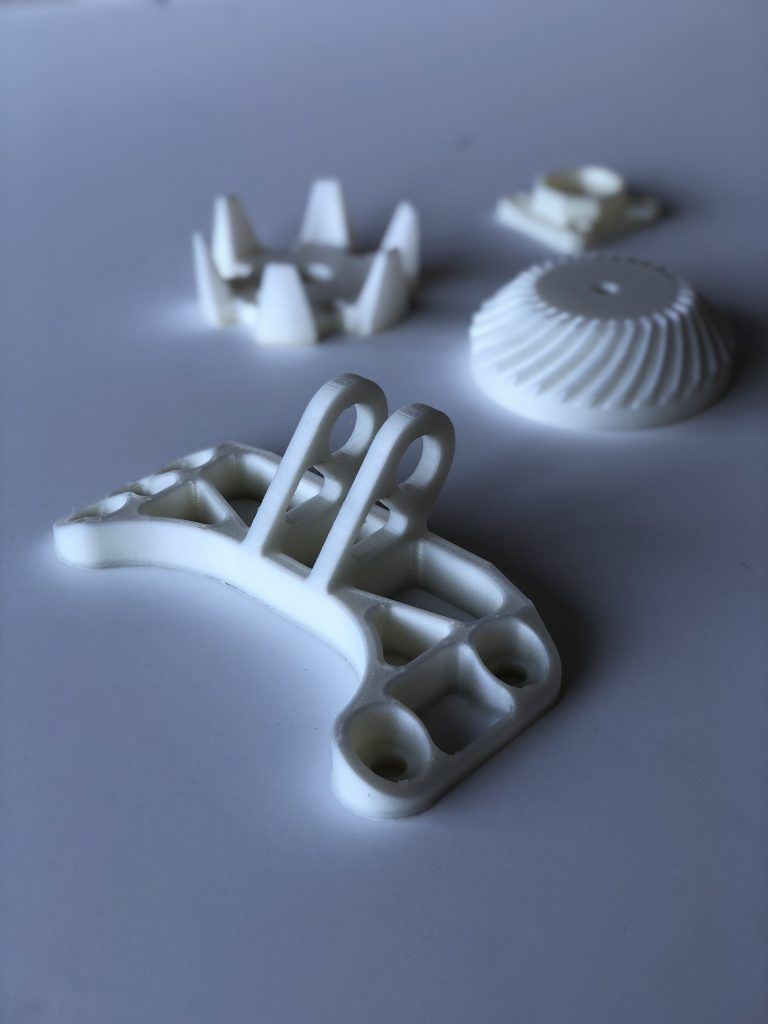 Despite the material's higher price tag, its rigidity and excellent strength-to-weight ratio have made carbon fiber the composite additive of choice for lightweight automotive and aerospace applications.
Despite the material's higher price tag, its rigidity and excellent strength-to-weight ratio have made carbon fiber the composite additive of choice for lightweight automotive and aerospace applications.
Starting life as a liquid polyacrylonitrile precursor, the fibrous mix of carbon atoms is then oxidized at around 300 °C to stop fibers from melting together. Then it is carbonized in an oxygen-free oven at temperatures of up to 1,000 °C. This process causes atoms to fuse and then expel any impurities, resulting in pure carbon atoms in very rigid strings.
Afterwards, carbon fiber strings pass through a surface treatment bath to etch the surface of the carbon. This makes the carbon strings more resilient and better able to stick to coating chemicals.
Coating, chopping, or milling fibers for use with 3D printing filament
Technically known as 'sizing', coating chemicals (like polyurethane, epoxy, or glycerin) allow the inert glass or carbon fibers to more easily interface with the polymer it will be mixed with.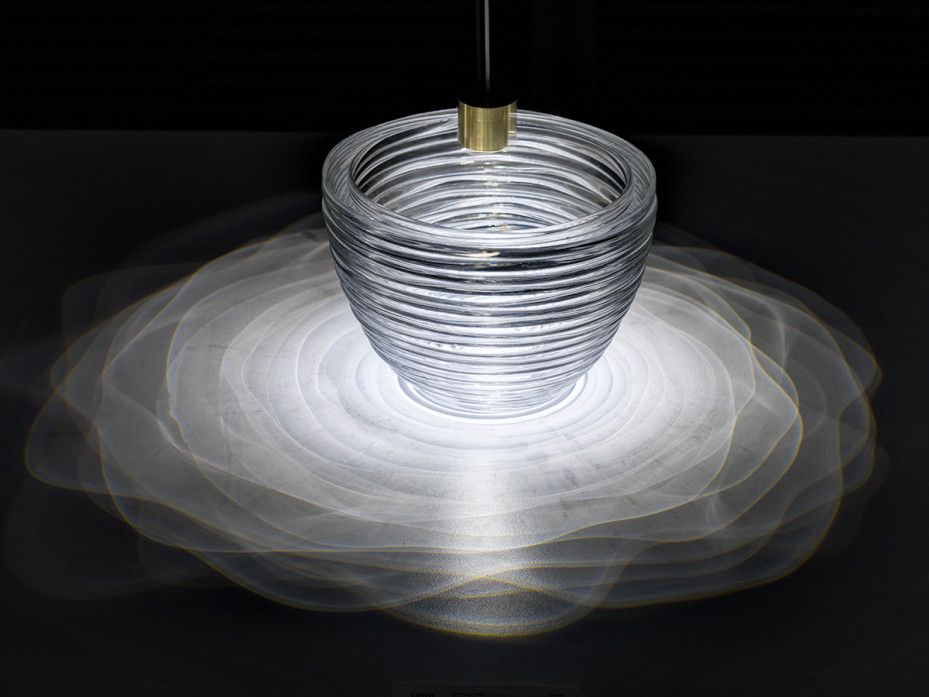 By matching the chemistry of that polymer, the coating strengthens the adhesive bond.
By matching the chemistry of that polymer, the coating strengthens the adhesive bond.
Fibers are usually coated when they will be cut or 'chopped' into lengths of up to 7 mm. The result is a composite 3D printing material that is reinforced by ‘long fibers’ that weave together within the polymer matrix.
But not all carbon and glass fiber used in 3D printing filament is coated.
The manufacturing process for each glass or carbon fiber composite affects the 3D printed materials' mechanical properties
While not coating or using a lower-quality coating might be a reason a composite material is less expensive, it can also be a legitimate choice.
That's especially true if the fibers will be milled into a fine powder, also known as 'short fibers'. Between 30 to 150 microns in length, these fibers have a large surface area making coating less necessary. In this case, the composite filament would more accurately be described as 'filled' (rather than 'reinforced') with carbon or glass fiber.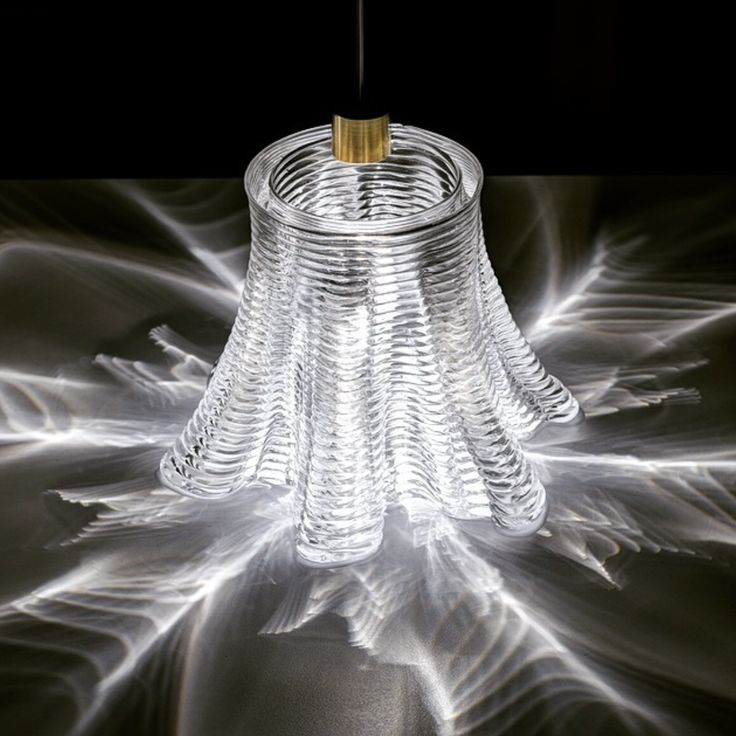
This approach of not coating milled fibers is not necessarily a bad thing. It just results in different material properties. Instead of being stiffer and stronger, the composite material will likely be more durable and impact-resistant.
After coating, chopping, or milling, the fibers are mixed with the base polymer(s) to create a composite material that can then be extruded into 3D printer filament.
This final filament extrusion is important because it's here that the long glass or carbon fibers become orientated within the polymer matrix. Running along the length of the filament, they create a weaving effect that provides extra strength for a 3D printed part. (This orientation is the reason why FFF 3D printers can extrude filament with up to 7 mm long fibers, through a 0.4 or 0.6 mm nozzle.)
Glass or carbon fibers up to 7 mm in length reinforce filament that can be extruded through Ultimaker print core CC Red's 0.6 mm nozzle
How to choose between different composite materials
With so many things in life, you get what you pay for. And composite 3D printing materials are no different
And composite 3D printing materials are no different
Composite materials from smaller filament companies may be more affordable. But because they don't necessarily specialize in the material science used to develop the composite, these companies might buy ready-made pellets from a larger wholesaler. They then extrude the filament themselves, on machines that may not have the torque required to properly orientate the fibers within the polymer matrix, resulting in a lower-quality filament.
By contrast, leading manufacturers have decades of expertise in developing reinforced polymers – often for the injection molding industry. By applying that expertise to additive manufacturing, using the highest-quality fibers, coatings, and processes, they fine-tune their polymer matrixes and extrude them on industrial-grade machines. This results in a filament that more readily carries the mechanical properties you need over to your 3D printed part.
For example, composite filaments from Clariant include:
BASF's composite filaments include:
PAHT CF15
PET CF15
PP GF30
And Owens Corning's:
XSTRAND® GF30-PA6
XSTRAND® GF30-PP
Download predefined composite material profiles from Ultimaker Marketplace for a plug-and-play 3D printing experience
Conclusion: Make an informed choice
All these composite filaments (and many more) are listed in the Ultimaker Cura Marketplace.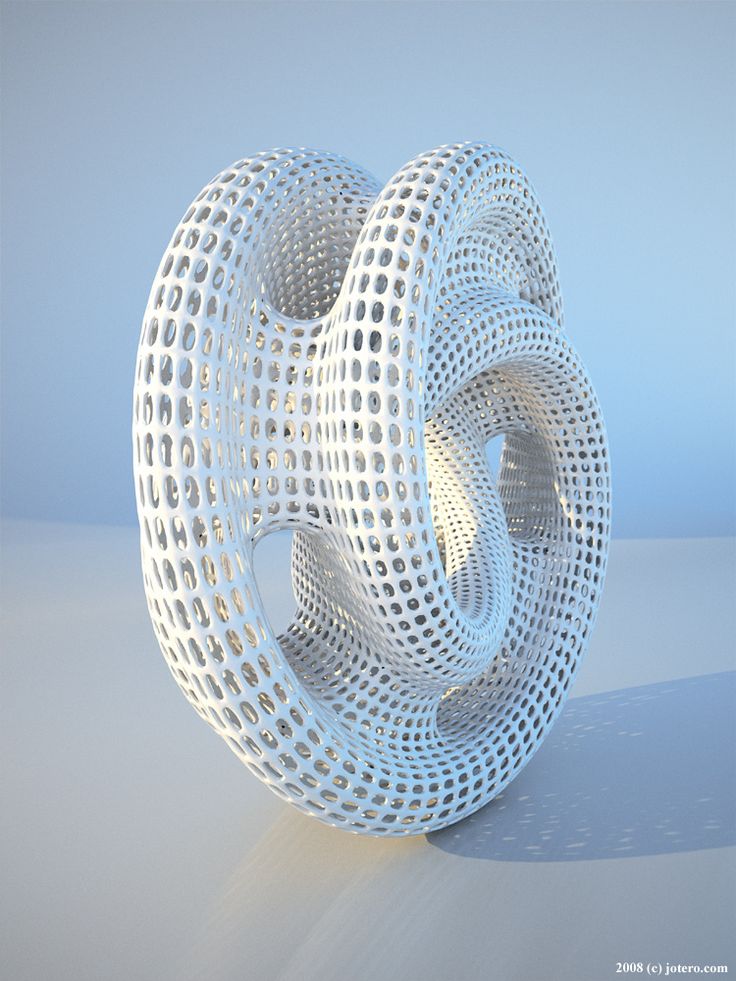
By downloading their predefined print profiles, you gain a plug-and-play 3D printing experience with the Ultimaker S5 Pro Bundle and Ultimaker S3 – without the need for trial-and-error. Plus, the materials’ descriptions and datasheet links make it easier to choose the right composite material for your application.
This means you can be more confident to achieve the mechanical properties and high-quality results you need – even with your first print.
And with a deeper understanding of how carbon or glass fibers are used to reinforce 3D printing filament, you can leverage the many benefits of composite materials for your own in-house production needs.
To access the Marketplace, download Ultimaker Cura for free here:
Download Ultimaker Cura
FibreX™ Nylon+GF30 3D Filament | Glass Fiber Reinforced
ON SALE
$48.00 – $185.00
4 interest-free payments with Learn More
FibreX™ PA6+GF30 glass fiber reinforced nylon copolymer is an engineering-grade material that has excellent mechanical and thermal properties [HDT of 170°C] while offering ease of printing in a wide array of desktop printers.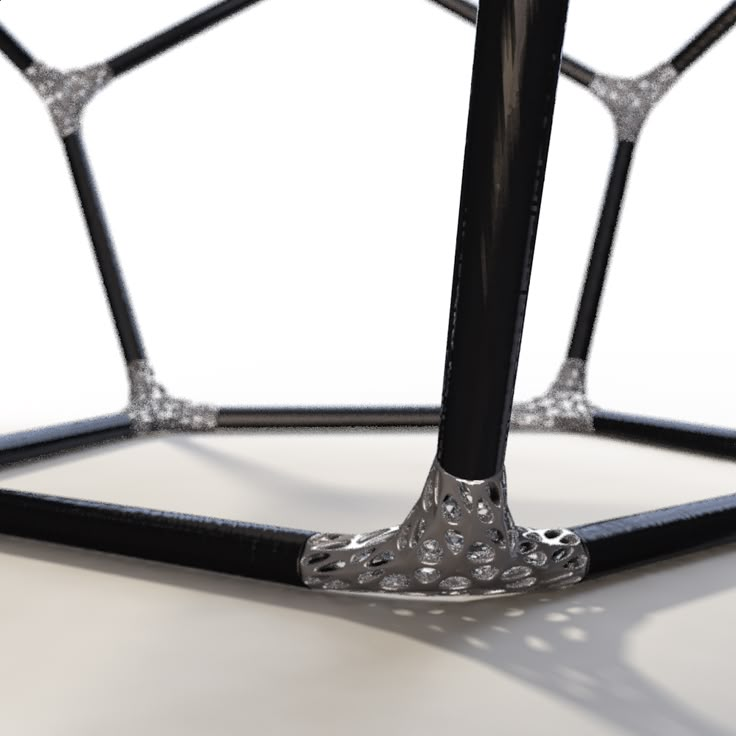 This material is a must-have when printing functional prototypes and production parts.
This material is a must-have when printing functional prototypes and production parts.
[yith_wcwl_add_to_wishlist]
SKU: Select options above Brand: FibreX™ Categories: Glass Fiber Nylon, Nylon Family, Glass Fiber Filaments
- Description
- Reviews
- Questions & Support
Our Nylon+GF30 glass fiber reinforced Nylon 6 Copolymer (PA6) is nothing less than an industrial-grade beast! Formulated to be exceptionally stiff and strong, all without being brittle. Polyamides (PA) are the work horse of the plastics industry the world over thanks to their excellent mechanical, chemical, and thermal resistance. The addition of heavy glass fiber reinforcement takes it to the next level.
Gearbox HT2™ 3D Printer:
Print industrial-grade parts using our Nylon+GF30 and more with the new Gearbox™ HT2 High-Temp 3D Printer.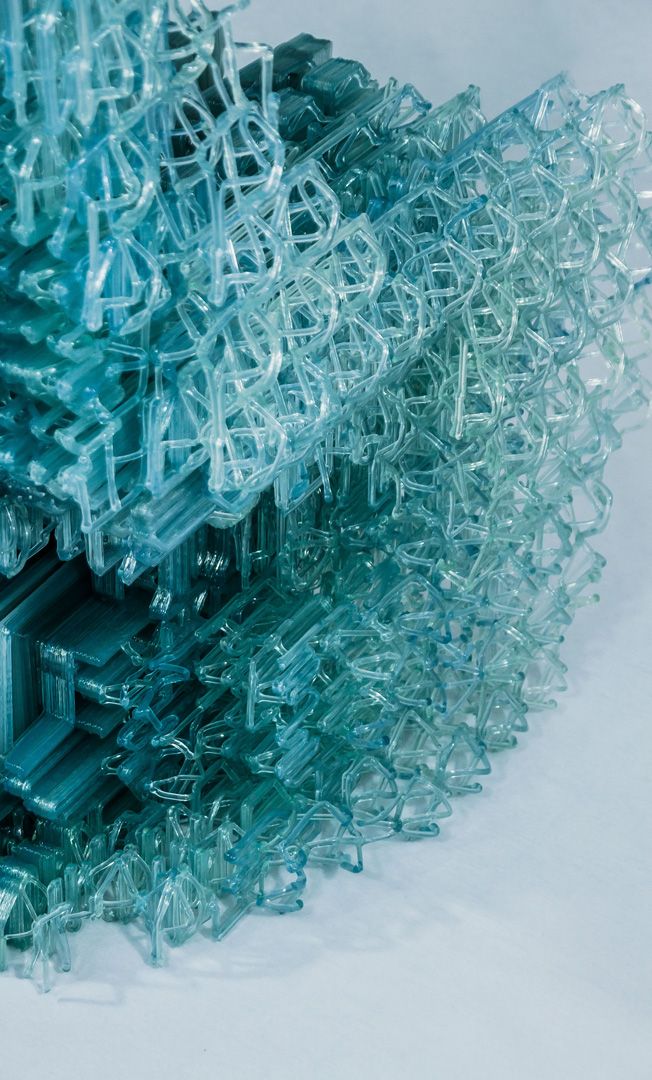
Extruder Temp
260-280°C
Bed Temp
60-75°C
Heated Chamber
Not required
Nozzle Specs
0.4mm diameter minimum
Hardened Steel Nozzle
Bed Adhesion
Magigoo Bed Prep
Layer Height
0.25mm or higher
Drying Specs
90°C for 4 hours
Supports
X1 USM Water Soluble Support
Benefits of Nylon+GF30 Include:
- Printable on practically any 3D printer with a heated bed
- Ideal for structural engineering-grade applications
- Exceptionally stiff and strong, without being brittle
- Excellent chemical resistance makes it suitable for automotive and industrial applications
- Resists fuels, lubricants, heat, and mechanical loading
- High thermal properties keep it strong up to 170°C in use, depending on printing and mechanical loads applied
- Glass fiber reinforcement improves dimensional stability, reduces shrinkage, lift, and warp
- Very strong layer bonding
Filament Specifications:
1.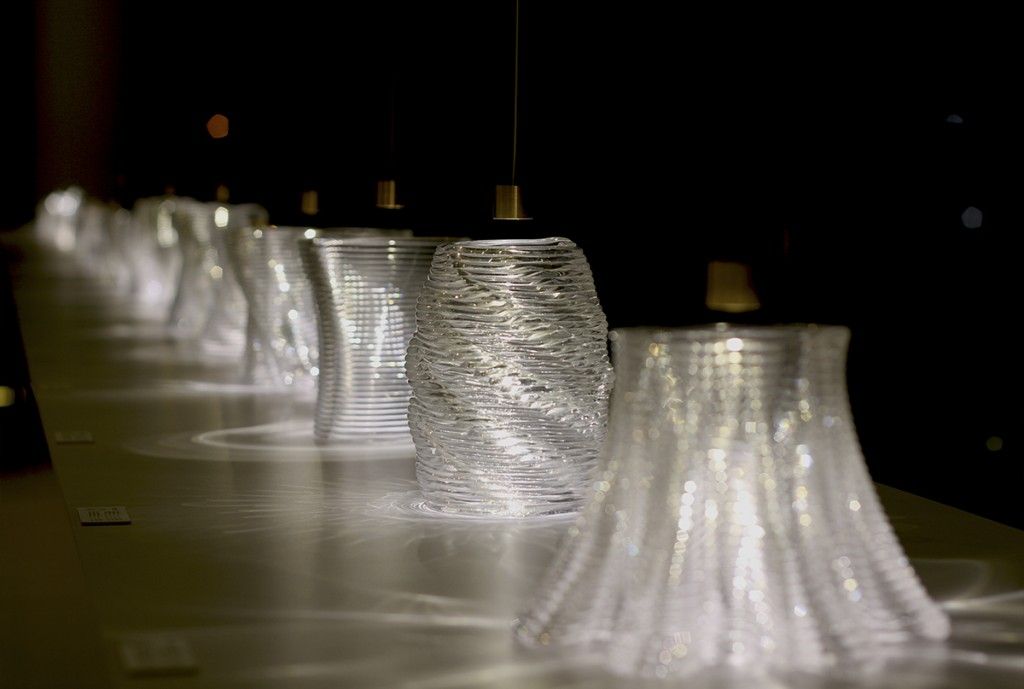 75mm and 2.85mm +/- 0.05mm in diameter
75mm and 2.85mm +/- 0.05mm in diameter
Recommended Print Settings:
- Extruder: 260-280°C
- Bed Temp: 60-75°C
- Nozzle: We currently recommend a hardened steel nozzle with a minimum diameter of 0.4mm
- Other: Ideal layer height is 60% of nozzle diameter. We do not recommend printing layers smaller than 0.25mm with glass fiber reinforced filaments
- Bed Prep: Magigoo Bed Prep or 3DXTECH Polyimide Tape gives us the best results
- Heated Chamber: Not required, but a 30-80°C chamber does improve layer bonding and finished part mechanical properties
- Supports: AquaTek™ water soluble X1 USM Universal Support Material works ideal for complex parts.
- Drying Instructions: 90°C for 4 hours.
What Is It?
Fibers made of glass reinforced into the polymer during manufacturing and aligned along the axis of filament.
This, along with their physical makeup, give this material enormous strength and mechanical properties.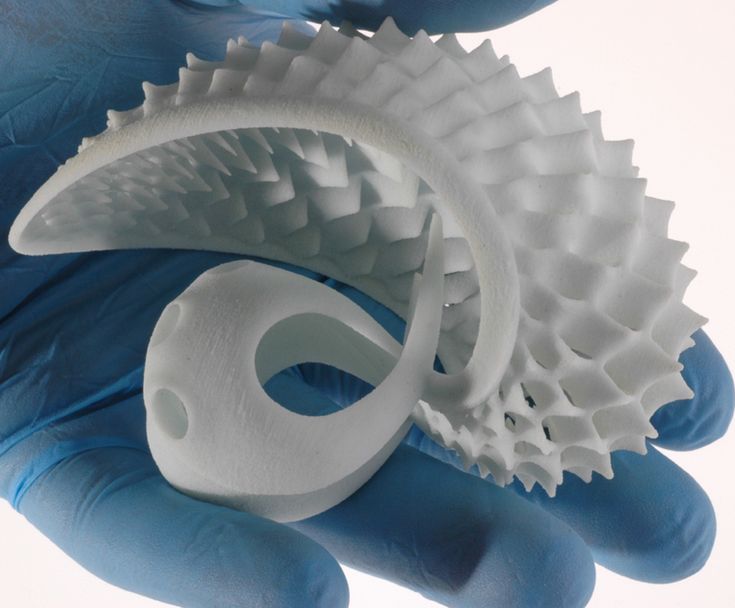
What Does It Do?
Glass fiber reinforcement gives material a lot of desirable properties:
- High strength
- High stiffness
- High chemical resistance
- Low thermal expansion
How Does It Work?
Reinforcing plastic with glass fibers produces a 3D printing filament which exhibits the best properties of both fiberglass and the plastic of choice.
What Is It Good For?
Ideal for any applications which require strength and rigidity.
For these reasons, glass fiber reinforced filament is very popular in automotive, mechanical, civil engineering, and research industries.
What Is It?
Fibers made of glass reinforced into the polymer during manufacturing and aligned along the axis of filament.
This, along with their physical makeup, give this material enormous strength and mechanical properties.
What Does It Do?
Glass fiber reinforcement gives material a lot of desirable properties:
- High strength
- High stiffness
- High chemical resistance
- Low thermal expansion
How Does It Work?
Reinforcing plastic with glass fibers produces a 3D printing filament which exhibits the best properties of both fiberglass and the plastic of choice.
What Is It Good For?
Ideal for any applications which require strength and rigidity.
For these reasons, glass fiber reinforced filament is very popular in automotive, mechanical, civil engineering, and research industries.
Abrasive Material
This material is particularly abrasive among 3D printing filaments. Users may find standard brass nozzles are chewed through very quickly compared to standard wear and tear. When worn through, the nozzle diameter will widen inconsistently and the printer will experience extrusion issues.
Because of this, it's strongly recommended this material be printed through a hardened steel nozzle rather than a softer metal. Hardened steel nozzles can often be inexpensive and easily installed depending on your printer manufacturer's instructions.
Questions?
Send us a message and we'll reach out as soon as we can!
Please enable JavaScript in your browser to complete this form.
Name *
Business / Organization
Email *
Phone
What can we help you with? *
Newsletter Signup
- Sign me up for the 3DXTECH newsletter
Continuous Fiberglass Printing Technology
The fully finished MAMBO (Motor Additive Manufacturing BOat) boat, made using CFM technology, was officially launched and presented at the Genoa 2020 exhibition. printer
How does it work?
Patented Continuous Fiber Manufacturing (CFM) 3D printing technology allows you to create unique shapes that cannot be achieved with conventional manufacturing. Through the use of robots skillfully controlled by generative algorithms (algorithms based on neural networks), additional freedoms for industrial design open up.
Today, the creativity of many designers and engineers is limited by various factors: technological, geometric constraints or production costs. And there are countless noteworthy projects that are destined to forever be great renders (prototype 3D renders). However, with the help of CFM technology, these projects can become a reality.
And there are countless noteworthy projects that are destined to forever be great renders (prototype 3D renders). However, with the help of CFM technology, these projects can become a reality.
Printing process
CFM technology involves the additive application of continuous fiber impregnated with thermosetting resin to create products with optimal characteristics calculated from a computer model. This makes it possible to create fiber-reinforced products with mechanical characteristics comparable to those of unidirectional fiberglass, without the help of master models, molds or other tooling. Thus, it is possible to obtain not only prototypes, but also small batches of finished products, efficiently and at minimal cost.
Moi's patented CFM 3D printing process
This technology makes products ultra-strong and lightweight, and the robotic system allows the printing size to be scaled.
President and CEO of Moi Composites explains how and why he chose this technique.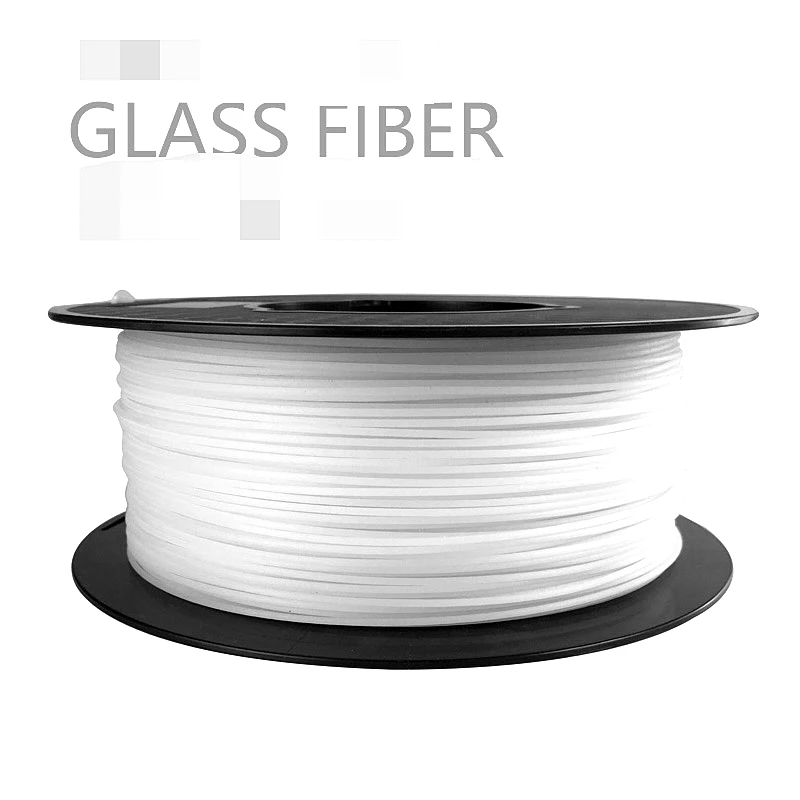
Gabriel Natal
President & CEO Moi Composites
“I think that evolution in shipbuilding should not be limited to the creativity of designers, engineers and naval architects. Every day new boat or yacht concepts are developed, featuring futuristic shapes or new, more ergonomic hulls, but most of these great ideas remain fantasies due to production problems, mold costs or other limitations. With 3D printing technology like ours, you can create new geometric shapes and refine them in real life.”
When the impossible becomes possible
MAMBO is 6.5 meters long and 2.5 meters wide, has a dry weight of about 800 kg and is equipped with a real navigation system, cork flooring, white leather seats and a 115 cu. engine.
The hull is a tribute to the famous Arcidiavolo yacht (architect Sonny Levy), where organic forms chase each other and become structural and functional elements.
Various parts of the boat were printed using two high-precision KUKA Quantec robots at Moi Composites headquarters (Milan) and at Autodesk’s AMF (Birmingham) to demonstrate on-site production, which is considered one of the most important advantages of 3D printing.
The MAMBO project demonstrates the great potential of additive manufacturing and 3D printing
The printed parts were joined and laminated to form a single structure without dividing the hull into decks. The relentless and continuous work of the robots, combined with the wisdom and experience of the shipyard craftsmen, has given birth to a new hybrid industrial system, technological and digital, and at the same time analog and adapted.
“The idea behind MAMBO is to demonstrate that you can produce one-of-a-kind performance-optimized boats without making models and molds. As a result, the creation of single or small batches of products eliminates the need to invest in expensive tools. Also, if you need to change something, like the shape of the hull or internal components, you can quickly and easily change your 3D model, which is difficult to do with molds.”
MAMBO on trials at sea near Otranto (Italy)
We believe that mass customization (manufacturing of individual products by analogy with motorcycles or guitars) is the next frontier and trend.
Using CFM technology to create a unique, highly personalized product based on the desires of the owner is a real opportunity that we want to bring to market.”
The company's partners in the MAMBO project are a team of global experts in automation, composite materials and the marine industry: Autodesk, Catmarine, Confindustria Nautica, Mercury Marine, MICAD, Osculati and Owens Corning.
Today, MAMBO is not only the first boat created using innovative 3D manufacturing techniques for use in real navigation, but also a window into a world of possibilities for bringing ideas and challenges that were previously impossible to life.
New fiberglass from RIZE / 3d printing / 3Dmag.org
3D printer manufacturer RIZE has unveiled its new heavy-duty fiberglass filament from the RIZIUM range for use with its own devices. This composite material has high dimensional stability/high rigidity and is intended primarily for large scale production.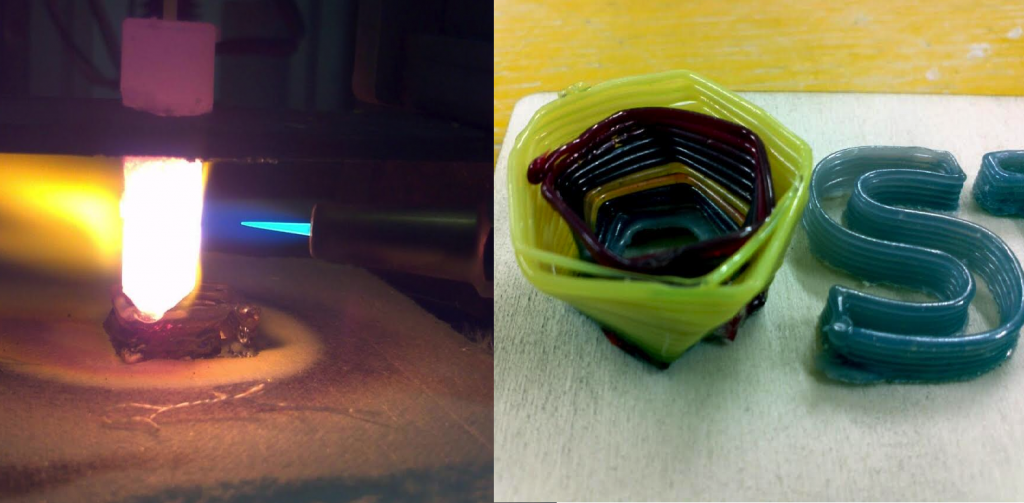 RIZIUM fiberglass is also the only RIZE composite material to date that is suitable for full color parts produced on the xRize 3D printer.
RIZIUM fiberglass is also the only RIZE composite material to date that is suitable for full color parts produced on the xRize 3D printer.
The composite is based on the company's unique matrix, which is reported to emit no harmful emissions at typical extrusion temperatures. It also has extremely low moisture absorption characteristics and has excellent chemical resistance. The filament uses Augmented Polymer Deposition technology, which allows it to combine with functional inks to create new properties and colors (over 820,000 different color combinations). In addition, RIZIUM Glass Fiber has received UL GREENGUARD certification for the xRize 3D printer, which means it is safe to use in enclosed spaces such as offices.
“With the high dimensional stability and durability of RIZIUM Glass Fiber, as well as UL GREENGUARD certification for low chemical emissions, users can expand applications suitable for 3D printing.”
Related entries:
-
just4fun
3d printing → New composite material from CRP Technology 0 -
just4fun
3d printing → Composite materials based on powder 0 -
just4fun
3d printers → New line of 3D printers from Desktop Metal 0 -
just4fun
3d printers → Desktop Composite 3D Printer 0 - Learn more



